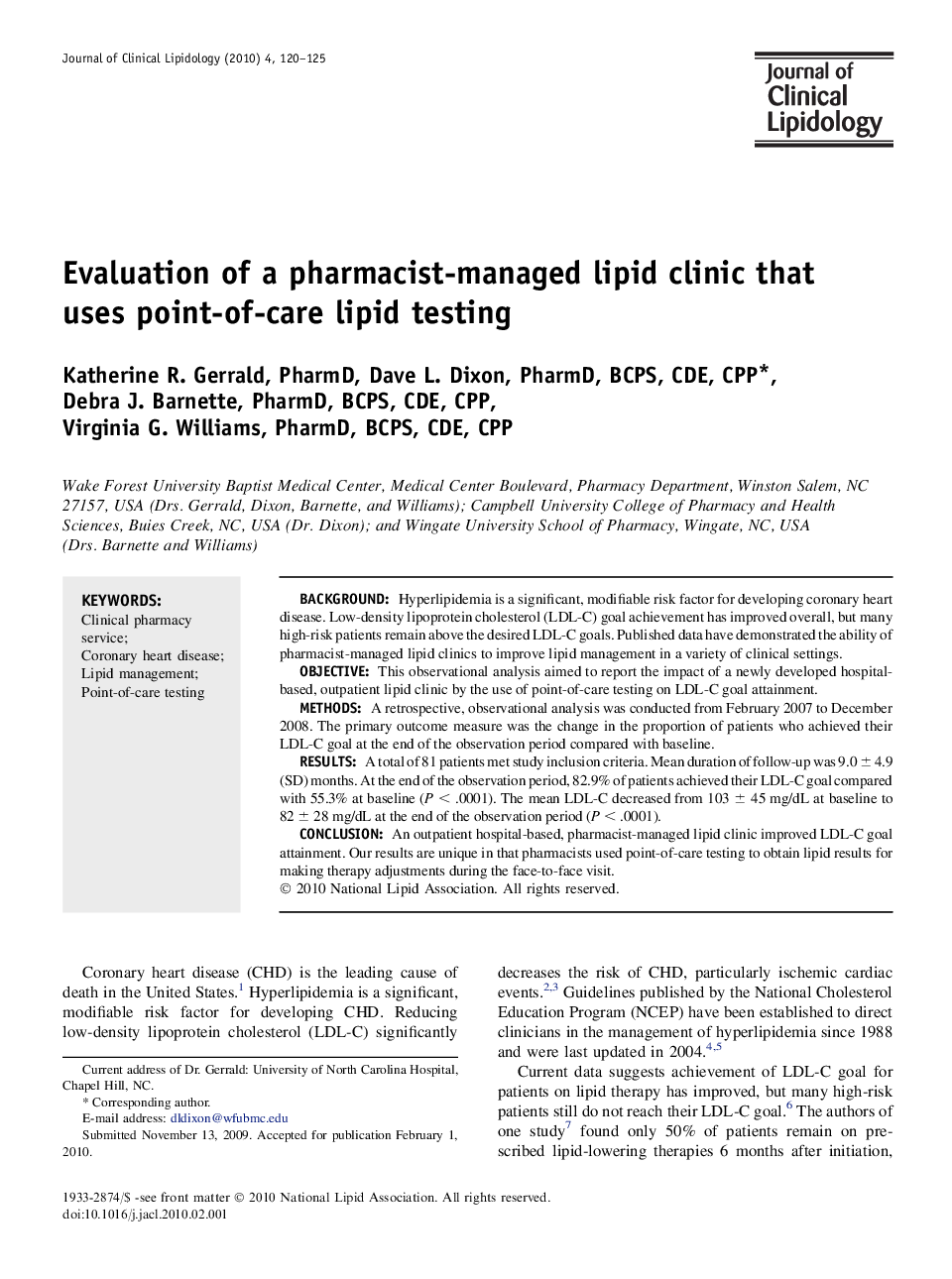| Article ID | Journal | Published Year | Pages | File Type |
|---|---|---|---|---|
| 2966377 | Journal of Clinical Lipidology | 2010 | 6 Pages |
BackgroundHyperlipidemia is a significant, modifiable risk factor for developing coronary heart disease. Low-density lipoprotein cholesterol (LDL-C) goal achievement has improved overall, but many high-risk patients remain above the desired LDL-C goals. Published data have demonstrated the ability of pharmacist-managed lipid clinics to improve lipid management in a variety of clinical settings.ObjectiveThis observational analysis aimed to report the impact of a newly developed hospital-based, outpatient lipid clinic by the use of point-of-care testing on LDL-C goal attainment.MethodsA retrospective, observational analysis was conducted from February 2007 to December 2008. The primary outcome measure was the change in the proportion of patients who achieved their LDL-C goal at the end of the observation period compared with baseline.ResultsA total of 81 patients met study inclusion criteria. Mean duration of follow-up was 9.0 ± 4.9 (SD) months. At the end of the observation period, 82.9% of patients achieved their LDL-C goal compared with 55.3% at baseline (P < .0001). The mean LDL-C decreased from 103 ± 45 mg/dL at baseline to 82 ± 28 mg/dL at the end of the observation period (P < .0001).ConclusionAn outpatient hospital-based, pharmacist-managed lipid clinic improved LDL-C goal attainment. Our results are unique in that pharmacists used point-of-care testing to obtain lipid results for making therapy adjustments during the face-to-face visit.
